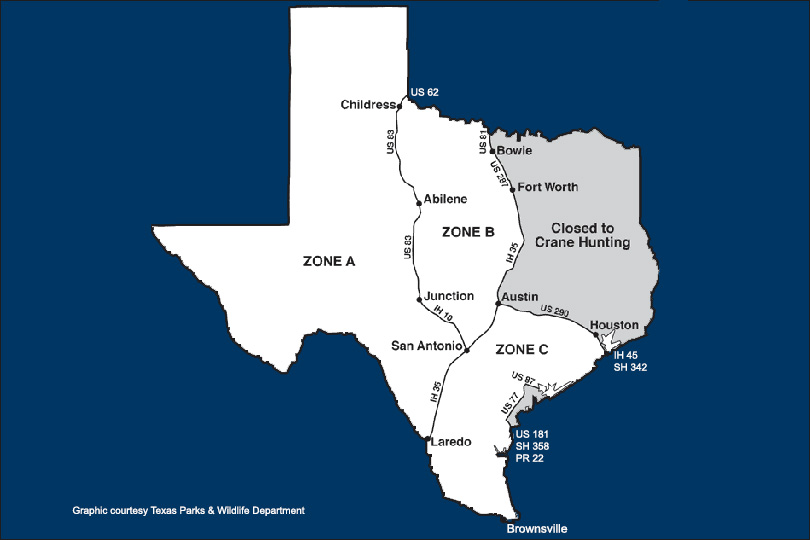By Jessica Domel
Multimedia Reporter
Over the next few weeks and months, more Texans will have the opportunity to try sandhill crane hunting.
The general season for sandhill cranes for the western part of the state, Zone A, opened Oct. 30. Zones B and C open in November and December, respectively.
According to the Texas Parks and Wildlife Department (TPWD), sandhill crane hunting has grown over the last few years.
“It’s really exploded in popularity,” Owen Fitzsimmons, TPWD’s Webless Migratory Game Bird Program leader, said. “It’s a combination of things, I think. We don’t have the geese that we used to have coming to Texas. So, this provides the same type of opportunity. You’re getting out in the field, and you’re putting out decoys.”
Hunters learning more about sandhill cranes may also play a role in the growth.
“It was relatively unknown,” Fitzsimmons told the Texas Farm Bureau Radio Network. “A lot more people are starting to realize through social media and other sources that it’s a really cool and fun sport they can get into.”
Sandhill cranes are larger than geese, and there are two subspecies that can be found in Texas.
“Although we have zones across the state that we do have crane hunting, they’re primarily found along the coast and in the Panhandle—the High (Plains) and Rolling Plains,” Fitzsimmons said.
Sandhill cranes are gray with dark wingtips. They may appear white in some light, according to TPWD. They have a long neck that is extended forward when flying.
Their wingspan is about five feet, and they fly in flocks ranging from just two to several hundred.
Hunters are encouraged to look at the photo of the cranes on OutdoorAnnual.com or via the Outdoor Annual app to ensure the cranes are not confused with federally protected whooping cranes.
At nearly five feet tall when standing, whooping cranes are taller than sandhill cranes. They also have black wingtips.
“Whooping cranes are going to be more white, and they sometimes intermingle,” Fitzsimmons said. “There’s a lot of resources on the internet where you can look at see the differences.”
To protect migrating whooping cranes on their way to the Aransas National Wildlife Refuge on the coast, there is no season for sandhill crane hunting for most of East Texas.
In areas where sandhill crane hunting is allowed, hunters must have a special permit in addition to a hunting license, the federal duck stamp and migratory game bird endorsement.
“You need to get a federal Sandhill Crane Hunting Permit, which is free, but you have to get it either through the Parks and Wildlife website online, by calling the Parks and Wildlife headquarters or by going to your local Parks and Wildlife office,” Fitzsimmons said.
Harvest Information Program (HIP) certification is also required.
The regular hunting season for sandhill cranes in Zone A opened Saturday, Oct. 30, and runs through Jan. 30, 2022.
The sandhill crane hunting season in Zone B is Nov. 26-Jan. 30, 2022.
Hunting in Zone C is open Dec. 18-Jan. 23, 2022.
A map of the zones, and this year’s bag limits and other regulations, are available on OutdoorAnnual.com, in the Outdoor Annual app and in the printed booklet.

